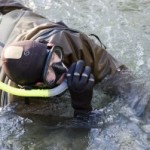Jan. 22, 2013, U.S. Sens. Patrick Leahy (D-VT) and Michael Crapo (R-ID) introduced S. 47, a strong, bipartisan bill that would reauthorize the landmark Violence Against Women Act (VAWA). This bill closely mirrors the bipartisan legislation that was introduced by Sens. Leahy and Crapo in the last Congress and which would improve VAWA programs and strengthen protections for all victims of violence, including Native American women.
Please take action today by contacting your senators and asking them to co-sponsor S. 47. The National Task force to End Sexual and Domestic Violence Against Women’s goal is to get 60 co-sponsors by January 31 so that VAWA can get to the Senate floor for a bipartisan victory.
So far, the bill has the following co-sponsors in addition to its chief sponsor, Senator Leahy (D-VT): Senators Ayotte (R-NH), Bennet (D-CO), Cantwell (D-WA), Casey (D-PA), Collins (R-ME), Coons (D-DE), Crapo (R-ID), Durbin (D-IL), Hagan (D-NC), Kirk (R-IL), Klobuchar (D-MN), McCaskill (D-MO), Mikulski (D-MD), Murkowski (R-AK), Murray (D-WA), Shaheen (D-NH), Tester (D-MT), Udall (D-CO), and Whitehouse (D-RI).
Also yesterday, in the U.S. House, Reps. Gwen Moore (D-WI) and John Conyers (D-MI) introduced H.R. 11, a House companion identical to the bipartisan Senate bill.
Call the Capitol switchboard at (202) 224-3121 and ask the operator to connect you to your senators. If you don’t know who your Senators are, you can look them up here. When you’re connected to their offices, tell the person who answers the phone:
1) I am a constituent from (city and state) and my name is _________.
2) I urge Senator____ to co-sponsor S. 47, a strong, bipartisan bill that would reauthorize the tttttttt Violence Against Women Act.
3) Thank you, and I look forward to hearing that the Senator is a co-sponsor.
If you prefer to e-mail, you can do so through the web forms for each Senate office provided here.
















 Mitchelene BigMan served as a mechanic in the Army. / CBS News
Mitchelene BigMan served as a mechanic in the Army. / CBS News